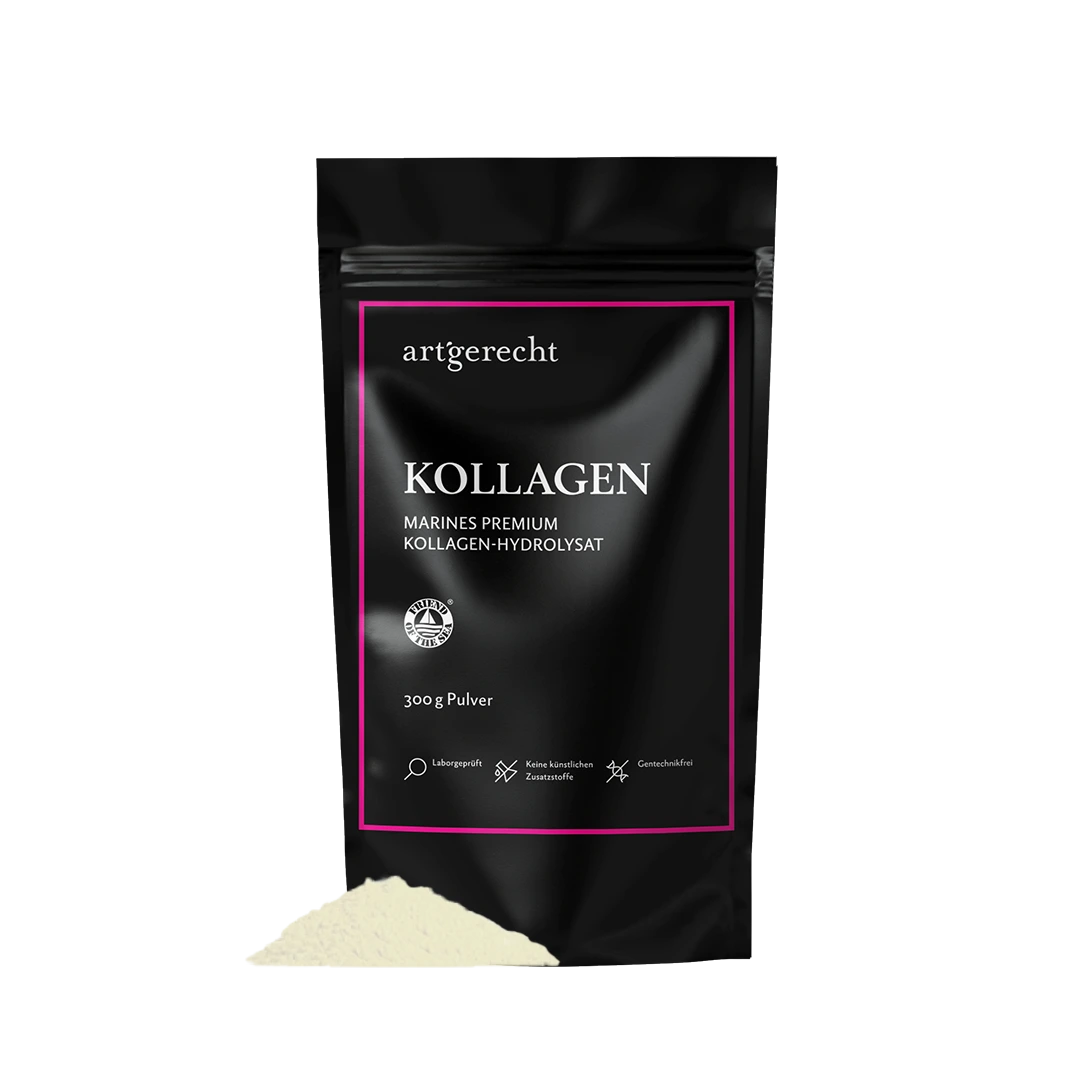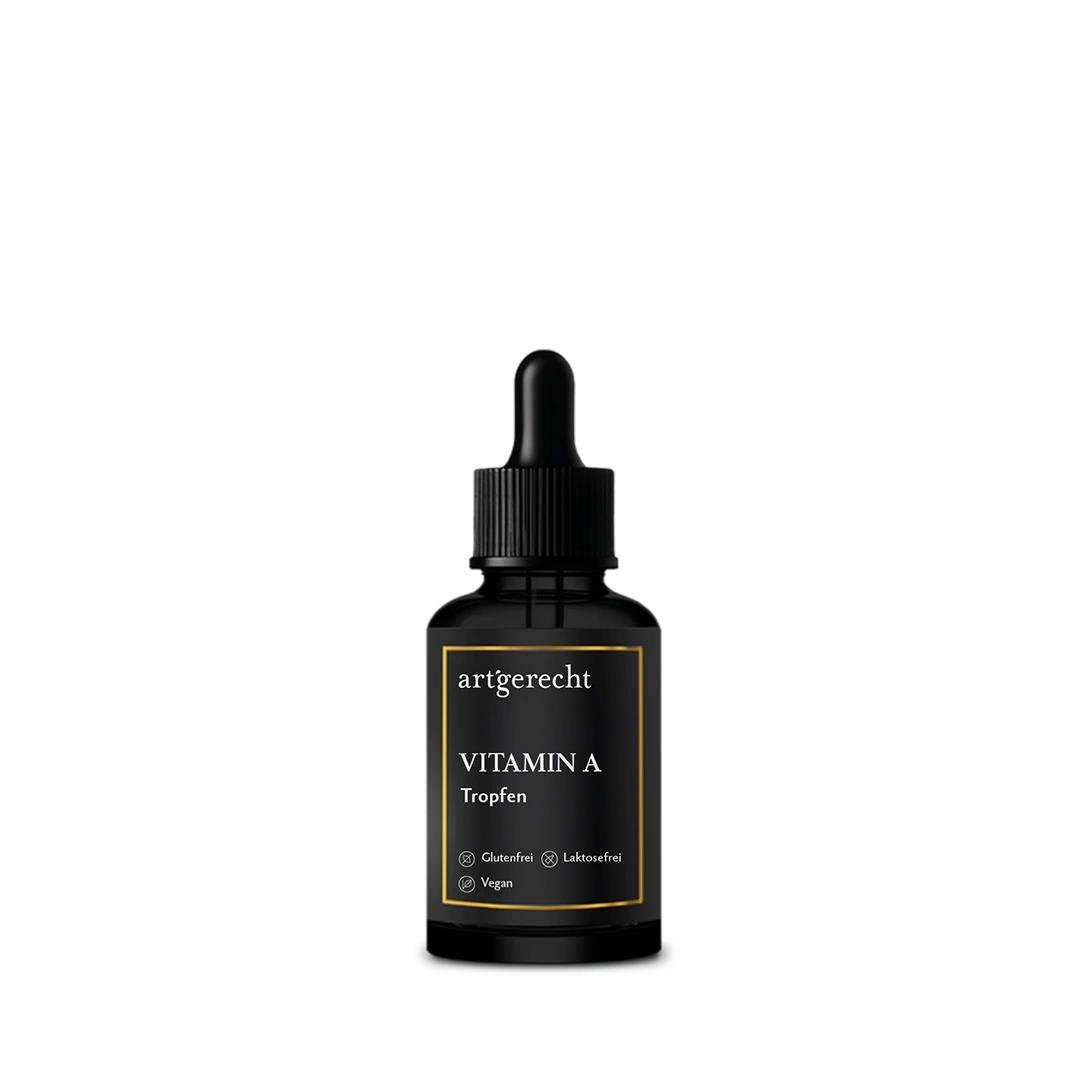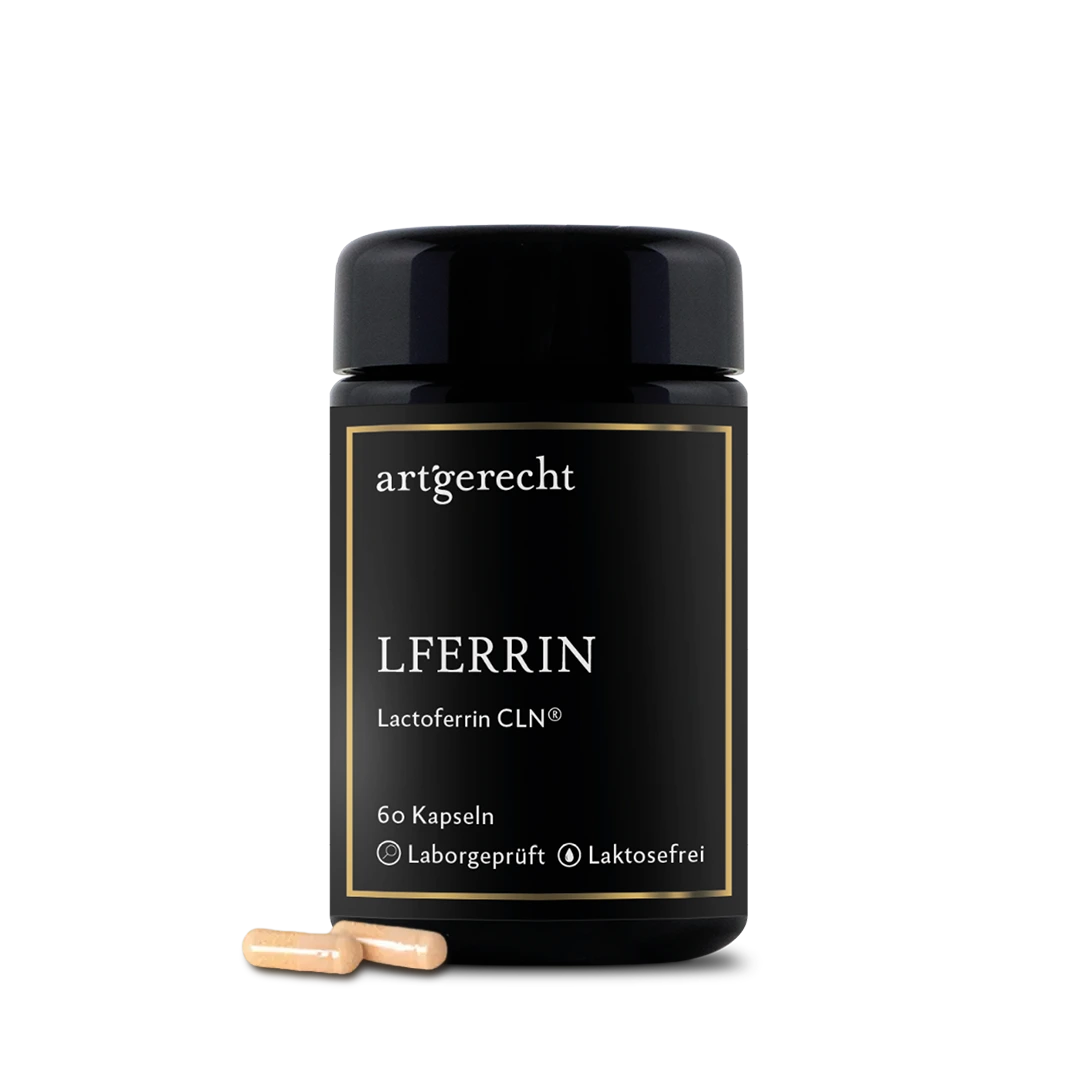- What exactly is an allergy?
- What is the evolutionaryäre advantage of an allergy?
- What is an allergy? When do I become allergic?
- What are antibodies? And how do they work
- What different allergies are there?
- How do I recognize an allergy?
- Difference allergy to pseudo-allergy and intolerance table:
- Allergic reaction: The problem
- The most important tips against allergies: What can you do
- Literature:
Our immune system is our protective shield and an extremely sophisticated system. It learns from birth which substances are dangerous for us and whether we should react against them - for example in the form of an allergic reaction. This is not always pleasant for us, but often rather stressful. So what is the point of an allergy and can it perhaps even save our lives?
What exactly is an allergy?
Our immune system consists of many different cells with different tasks. Some immune cells fight viruses that settle in our body cells, others break down mutated cancer cells or eliminate cell debris after a trauma. Depending on the problem we have at the time, the appropriate special unit is alerted and directed to the site of the incident via messenger substances (cytokines). The released messenger substances serve as the other units so as not to consume energy unnecessarily.
Foreign substances (or antigens), such as the poison of a bee, bacteria or parasites, are dangerous for us and cause a reaction as soon as we come into contact with them (recognize their surface). However, the cause of the allergic reaction is that the antigen has penetrated our body and come into contact with our immune cells. This contact is called sensitization and can also occur unnoticed. If this is the case, the so-called Th2 system switches on. It learns what the antigen looks like and starts to produce antibodies against it. These bind specifically to the emitted antigen.
What is the evolutionaryäre advantage of an allergy?
Our immune system learns from birth which substances are dangerous for us and whether we should react against them. This reaction manifests itself in an excessive immune response, which is accompanied by the classical signs of inflammation.
In the case of a parasitic or bacterial infection, we typically notice redness, swelling, warmth, pain and possibly a reduction in bodily functions. This is where the Th2 system can save our lives with its rapid response. However, in the case of an accidental bruise or a foodstuff, this is more likely to be a lukewarm response.
This learning process is dynamic and not fixed until the end of life, which is why vaccinations must also be repeated at certain intervals in order to regularly train the Th2 system. An allergy therefore does not necessarily have to be present until the end of life, but can also be desensitized.
What is an allergy? When do I become allergic?
If there is renewed contact with a substance after sensitization, e.g. an actually harmless pollen, „remembers“ the immune system and reacts with an excessive reaction. In other words, the allergen - a potentially dangerous substance - is recognized and attacked. Depending on the point of contact between the antigen and the antibody, the corresponding allergic symptoms occur again and again: the annual hay fever is one example. If we have contact between a pollen and the surface of the lungs, this can lead to respiratory distress. In the case of nausea with the esophagus, swallowing difficulties and even shortness of breath and digestive problems.
.What are antibodies? And how do they work
Antibodies are produced by immune cells (the B lymphocytes) and are used for immune defense, which is why they are also calledimmunoglobulins (Ig). There are several types of antibodies (IgA, IgD, IgE, IgG, IgM), which naturally have different functions (IgE is the most important in allergies). However, it could be simplified to say that a specific antibody must always be formed in order to be protected against a certain antigen. This requires prior contact with the surface of the antigen. This antibody then fits like a key to a specific antigen lock. Because our immune cells have no eyes, they are partially equipped with antibodies in order to be able to recognize and destroy the antigen using the lock-and-key principle. In addition, antibodies are also distributed throughout the body like little foxes. If an antigen then penetrates somewhere, the little finger binds (lock-and-key principle), makes the antigen visible to our immune cells and may even block its function.
What different allergies are there?
There are different types of allergies, which can also be divided into different classes. The type I allergy or immediate type reaction occurs within a few seconds to hours and is usually triggered by substances (animal hair, pollen, mold spores, dust particles such as mites, medicines or food) from the environment.
However, an allergy, especially to food, is often confused with a pseudoallergy or intolerance, as the effects we perceive can be similar. Pseudoallergy is very similar to type I allergy, but differs in the reaction of the immune system: an immunological reaction involving the IgE antibodies is therefore not detectable. In pseudoallergic reactions, there is no prior sensitization. It is therefore a non-specific, allergic reaction, i.e. without a suitable antibody (IgE) against the antigen. An intolerance has no immunological background, but is often caused by an enzyme deficiency (e.g. lactose intolerance) or an absorption disorder (e.g. fructose intolerance) and is therefore a metabolic disorder.
.How do I recognize an allergy?
Depending on the type of allergy, there are different symptoms that can manifest themselves. The point of contact with the antigen is often decisive in determining which symptoms develop. The differences between allergy, pseudo-allergy and intolerance are difficult to distinguish, especially for laypeople, which is why you should search for clues together with your doctor.
Difference allergy to pseudo-allergy and intolerance table:
| Disease type | Auslöser | Signs | Background | |
| Allergy | Food | Swelling and itching of the oral mucosa and throat, tongue swelling, diarrhea, vomiting, nausea after eating, meteorism, colicky pain | IgE-mediated reaction (=nonspecific, allergic reaction without a suitable antibody) | |
| Allergy | Pollen | Itching and redness in the nose, whitish-white secretion, paroxysmal sneezing attacks | IgE-mediated reaction | |
| Allergy | Insects | Difficulty breathing, itching in the throat, on the hands and soles of the feet, nausea/vomiting or circulatory problems | ||
| IgE-mediated reaction | ||||
| Zöliakie | Gluten | Chronic diarrhea, diffuse whole-body complaints | Non-IgE-mediated immune reaction | |
| Pseudo-allergy | e.g.B. Lectins from beans or food additives | Swelling, redness and itching of the mucous membranes in the mouth and throat runny nose (rhinitis), gastrointestinal complaints, hives, severity is highly dependent on the type of allergy | .depends on the amount/concentration | Unspecific activation of mast cells and thus release of inflammatory mediators |
| Food intolerance | Lactose | Bloating, diarrhea, abdominal pain | Too few enzymes for digestion | |
| Food intolerance | Fructose | Bloating, diarrhea, abdominal pain | Too few absorption channels |
Allergic reaction: The problem
Before the antigen enters the body, there are a number of protective mechanisms that act as a barrier to protect us from external influences. The more intact the barrier is, the better I can protect myself from foreign substances (antigens). These barriers can be found on all surfaces such as the skin, nose, lungs, mouth and intestines. With regard to the gut in particular, research has shown that a „leaky gut“, i.e. an intestinal barrier that is too permeable, is closely linked to the development of allergies. [1] [2] The mechanism behind this is quickly clear: if my barrier is leaky, antigens can penetrate more easily and trigger a reaction from the immune system.
The most important tips against allergies: What can you do
There are various ways to combat the symptoms of an allergy.
1. avoid the allergen
Depending on the type of allergy, one important measure is to avoid the allergen. However, this risk prevention is often not so easy, as bees, house dust, animal hair or traces of shellfish can only ever be controlled to a limited extent. However, it is essential to take good risk precautions, especially in the case of severe symptoms and a tendency to anaphylactic shock.
2. Intact barriersAn intact barrier depends on many factors, as it should protect us from all external influences (microorganisms, sun, cold, mechanical stimuli, etc.). There are therefore a number of stress factors that have a damaging influence. As our intestines, at over 500m, are the largest protective barrier, it is worth paying particular attention to them. You can find out exactly what you can do to strengthen your intestinal barrier in the article „Leaky Gut“.
It is often the case that an allergy worsens during stressful times. Stress increases the permeability of the intestinal barrier (intestinal permeability), which makes it easier for antigens to enter the body. [3]
Exclusion factors for long-term barriers *
Stress
- Psychosocial stress
- Sports-induced heat stress
Nutritional components
- Industrial sugar
- Fructose
- Salt
- Emulsifiers
- Surfactants
- Organic solvents
- Gluten (gliadin)
- Microbial transglutaminase
- Nanoparticles
- Ethanol
- Hull fruit
- Potatoes
Nutrition & nutrients
- High calorie diet
- High fat diet
- Deficiency of:
- Vitamin A
- Indigestible carbohydrates
Inflammatory reactions
- Bacterial and viral infection
- Tumor necrosis factor α (TNF-α)
- Certain pathogens
Non-steroidal anti-inflammatory drugs (e.g. acetylsalicylic acid). e.g. acetylsalicylic acid)
Hypoxia in the intestine (as a result of surgery)
* Sources: see our articles on “The leaky gut. The leaky gut syndrome“
3. immune regulation
Since our immune system is the trigger for the allergy and its symptoms, it makes the most sense to start at the root of the problem. As the immune system is a dynamic and above all learning system, it is possible to develop tolerance to the antigen. There are various options for this:
- Hyposensitization through a medically controlled, regular administration of the antigen. This can create tolerance to the immune system. This procedure usually takes three years.
- Probiotics: Current study results show that probiotics can be used as a useful addition to therapy. [4] [5] [6]
- These promote the development of regulatory T-cells, which are essential for a good immune response.balance between the various special units of the immune system and calm the Th-2 system. [4] It is also interesting to note that our microbiome (especially our intestinal flora) is probably also involved in the development of allergies. Microorganisms train our tolerance to foreign substances and ensure that our special units do not overreact.
- An appropriate diet: In order for our microbiome to be a support for us and not a burden, it needs the right pre-biotic food. A varied and species-appropriate diet helps to restore the internal balance of the intestinal flora. You can find out exactly how to do this in our article: Building up the intestinal flora.
- Adequate vitamin D levels can also help to reduce the chances of developing an allergy [7] and can also contribute to immune regulation. [5]
Literature:
- Liu, Z., Li, N., & Neu, J. (2007). Tight junctions, leaky intestines, and pediatric diseases. Acta Paediatrica, 94(4), 386–393. https://doi.org/10.1111/j.1651-2227.2005.tb01904.
- Perrier, C., & Corthésy, B. (2011). Gut permeability and food allergies. Clinical & Experimental Allergy, 41(1), 20–28. https://doi.org/10.1111/j.1365-2222.2010.03639.
- Kelly, J. R., Kennedy, P. J., Cryan, J. F., Dinan, T. G., Clarke, G., & Hyland, N. P. (2015, October 14). Breaking down the barriers: The gut microbiome, intestinal permeability and stress-related psychiatric disorders. Frontiers in Cellular Neuroscience. Frontiers Media S.A. https://doi.org/10.3389/fncel.2015.00392.
- Ho, H. en, & Bunyavanich, S. (2019, May 1). Microbial Adjuncts for Food Allergen Immunotherapy. Current Allergy and Asthma Reports. Current Medicine Group LLC 1. https://doi.org/10.1007/s11882-019-0859-1.
- Joo Chan, C., Richardo, T., & Lim, R. L. H. (2018, November 2). Current Trend in Immunotherapy for Peanut Allergy. International Reviews of Immunology. Taylor and Francis Ltd. https://doi.org/10.1080/08830185.2018.1509967.
- Rajakulendran, M., Tham, E. H., Soh, J. Y., & Van Bever, H. (2018). Novel strategies in immunotherapy for allergic diseases. Asia Pacific Allergy, 8(2). https://doi.org/10.5415/apallergy.2018.8.e14.
- Matsui, T., Tanaka, K., Yamashita, H., Saneyasu, K. ichi, Tanaka, H., Takasato, Y., … Ito, K. (2019, April 1). Food allergy is linked to season of birth, sun exposure, and vitamin D deficiency. Allergology International. Japanese Society of Allergology. https://doi.org/10.1016/j.alit.2018.12.003.











